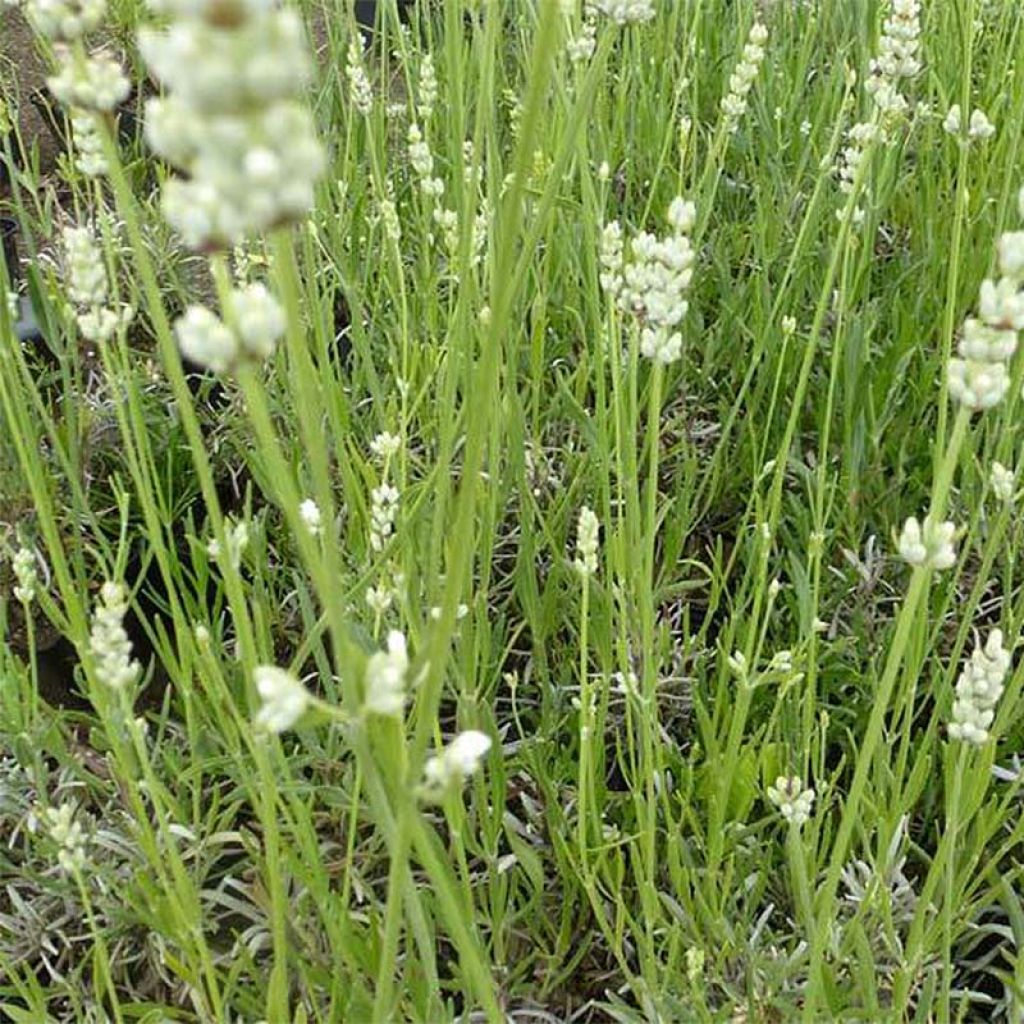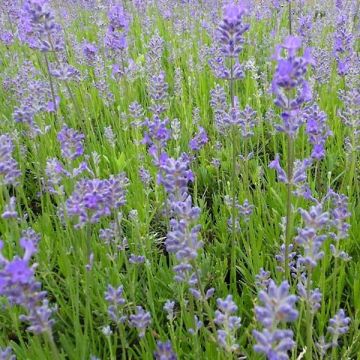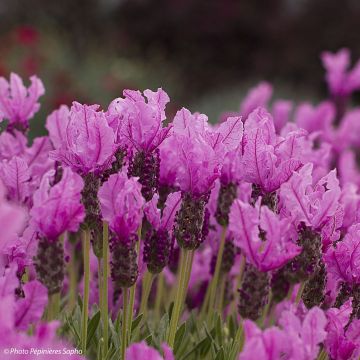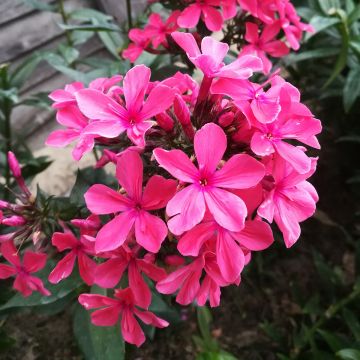

Lavandula angustifolia Hidcote White - True Lavender


Lavandula angustifolia Hidcote White - True Lavender
Lavandula angustifolia Hidcote White - True Lavender
Lavandula angustifolia Hidcote White
True Lavender, English lavender
This item cannot be shipped to the selected country
Delivery charge from €5.90
Delivery to Corse prohibited
More information
Delivery charge from €5.90
Delivery to Corse prohibited
More information
Schedule delivery date,
and select date in basket
This plant carries a 12 months recovery warranty
More information
We guarantee the quality of our plants for a full growing cycle, and will replace at our expense any plant that fails to recover under normal climatic and planting conditions.
From €5.90 for pickup delivery and €6.90 for home delivery
Express home delivery from €8.90.
Delivery to Corse prohibited: UE law prohibits the import of this plant from mainland France to Corse as part of the fight against Xylella fastidiosa. Please accept our sincere apologies.
More information

Does this plant fit my garden?
Set up your Plantfit profile →
Description
Lavandula angustifolia 'Hidcote White' is a variety of English lavender covered with compact spikes of pure white in July-August. It then resembles a true ball of light, superb when planted amongst darker plants. Its dense and compact vegetation, as well as its particularly abundant flowering, are accompanied by a divine fragrance. The spikes are carried by long, leafy stems, emerging from evergreen grey-green foliage, which is even lighter when the soil is dry and the summer is hot. This variety will thrive in well draining, rocky soil, in full sun.
Lavandula angustifolia, sometimes called English lavender, is a plant of the Lamiaceae family, and a relative of sage, thyme and rosemary. The 'Hidcote White' variety forms a small bushy plant measuring 45 to 50 cm (18 to 20in) in all directions, with a very compact, dense and vigorous habit, in a bushy and rounded clump. Its decorative and evergreen foliage consists of narrow aromatic leaves in a beautiful silver-green colour. In summer, this lavender is covered with a multitude of highly fragrant and honey-producing white flowers carried by short cylindrical spikes, at the end of thin woody and leafy stems. In reality, it is the coloured calyxes, surrounding the flowers, that influence the perception of the colour of the blooms when seen from a distance.
Lavender 'Hidcote White' is a hardy variety, but like most other lavenders, it needs to be planted in full sun in a very well-draining (even rocky) soil, on a slope or in a rockery. In a sunny and warm location, its silver-green foliage will be more vibrant and its flowers will emit an intense fragrance. An ornamental and Mediterranean plant par excellence, lavender can be used in flower beds, as a specimen plant, in borders, rockeries, pots, by the seaside, and even as a low-flowering hedge.
There are a multitude of possibilities available to the gardener with this plant's graphic and wild appearance, the colour of its foliage and its white flowers. Lavender 'Hidcote White' can be associated with grasses such as Stipa pennata or Stipa tenuifolia, which, with their tousled habit, will contrast with its rounded shape and create a harmonious association often found in nature. It will also work wonders when paired with evening primroses, perennial flaxes, astragalus, euphorbias, or dark shrubs such as dwarf conifers, strawberry trees, landscape roses, and photinias. It pairs well with Iris germanica, daylilies, and a small bindweed called Convolvulus althaeoides. You can also create beautiful pots to place on the patio or balcony. It is also possible to mix several varieties of lavender together, creating an elegant display with a variety of flower and foliage colours, as well as different plant sizes.
Properties: As lavender is a very nectar-rich plant, it contributes to the conservation of bees: the nectar from its flowers attracts bees, making some of the best honey. The plant can be distilled to obtain highly sought-after essential oil for perfume and aromatherapy. Its numerous therapeutic properties are still widely used: its essential oil has antiseptic, antispasmodic, healing, cleansing, diuretic, and other properties.
Lavandula angustifolia Hidcote White - True Lavender in pictures




Flowering
Foliage
Plant habit
Botanical data
Lavandula
angustifolia
Hidcote White
Lamiaceae
True Lavender, English lavender
Cultivar or hybrid
Other Lavendula - Lavender
Planting and care
In nature, lavenders always live in poor and stony, dry, perfectly drained environments, in full sun. These plants dislike summer rain, which makes them sick and causes them to disappear, as they are very sensitive to fungal diseases induced by the combination of heat and soil moisture. In winter, they require good drainage, and in summer, they need to be kept dry. Lavender will age better in poor soil, as its growth will be slower and it will have less tendency to become bare at the base. To limit this phenomenon, pruning should be carried out from a young age, after flowering or in autumn, just above the first buds that can be seen on the wood. Lavenders never regrow on old wood. The clump will thus branch out more and more, remaining compact, eventually forming beautiful round and dense cushions. When planting, provide them with what they like: gravel, stones, coarse sand, but definitely not potting soil, compost, or fertiliser!
Planting period
Intended location
Care
Summer flowering perennials
Haven't found what you were looking for?
Hardiness is the lowest winter temperature a plant can endure without suffering serious damage or even dying. However, hardiness is affected by location (a sheltered area, such as a patio), protection (winter cover) and soil type (hardiness is improved by well-drained soil).

Photo Sharing Terms & Conditions
In order to encourage gardeners to interact and share their experiences, Promesse de fleurs offers various media enabling content to be uploaded onto its Site - in particular via the ‘Photo sharing’ module.
The User agrees to refrain from:
- Posting any content that is illegal, prejudicial, insulting, racist, inciteful to hatred, revisionist, contrary to public decency, that infringes on privacy or on the privacy rights of third parties, in particular the publicity rights of persons and goods, intellectual property rights, or the right to privacy.
- Submitting content on behalf of a third party;
- Impersonate the identity of a third party and/or publish any personal information about a third party;
In general, the User undertakes to refrain from any unethical behaviour.
All Content (in particular text, comments, files, images, photos, videos, creative works, etc.), which may be subject to property or intellectual property rights, image or other private rights, shall remain the property of the User, subject to the limited rights granted by the terms of the licence granted by Promesse de fleurs as stated below. Users are at liberty to publish or not to publish such Content on the Site, notably via the ‘Photo Sharing’ facility, and accept that this Content shall be made public and freely accessible, notably on the Internet.
Users further acknowledge, undertake to have ,and guarantee that they hold all necessary rights and permissions to publish such material on the Site, in particular with regard to the legislation in force pertaining to any privacy, property, intellectual property, image, or contractual rights, or rights of any other nature. By publishing such Content on the Site, Users acknowledge accepting full liability as publishers of the Content within the meaning of the law, and grant Promesse de fleurs, free of charge, an inclusive, worldwide licence for the said Content for the entire duration of its publication, including all reproduction, representation, up/downloading, displaying, performing, transmission, and storage rights.
Users also grant permission for their name to be linked to the Content and accept that this link may not always be made available.
By engaging in posting material, Users consent to their Content becoming automatically accessible on the Internet, in particular on other sites and/or blogs and/or web pages of the Promesse de fleurs site, including in particular social pages and the Promesse de fleurs catalogue.
Users may secure the removal of entrusted content free of charge by issuing a simple request via our contact form.
























































